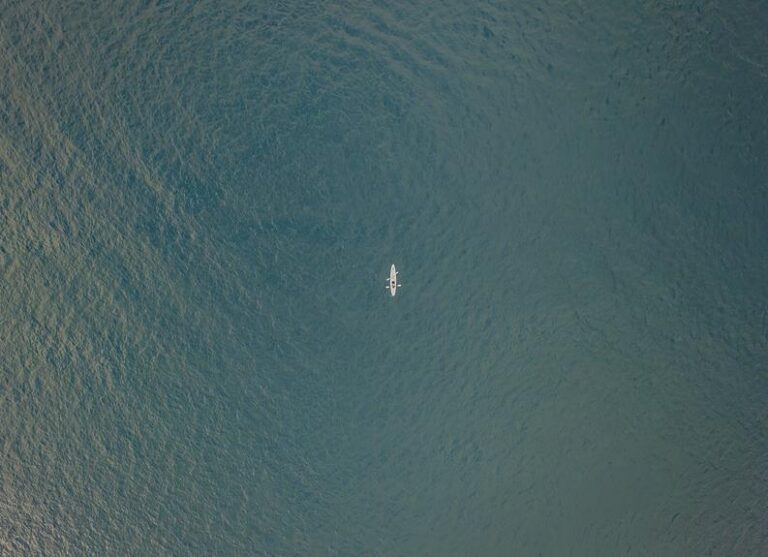Ready to embark on your kayaking adventure? Before you hit the water, it's crucial to choose the right kayak for you.
In this article, we'll guide you through the process, ensuring you make an informed decision. From tranquil ponds to rugged coastlines, we'll explore different water types and the kayaks best suited for each.
We'll discuss sit-on-top and sit-inside designs, tandem and fishing kayaks, and even folding or inflatable options.
Get ready to find the perfect kayak for your unforgettable journeys.
Key Takeaways
- Consider the type of water you will be paddling on, such as freshwater or saltwater, and the specific conditions of the water (ponds and lakes, coastlines, slow-moving rivers, still and moving water).
- Different types of kayaks are suited for different types of water, such as recreational sit-inside and sit-on-top kayaks for ponds and lakes, longer recreational sit-inside or sit-on-top kayaks, or day touring and expedition kayaks with skegs or rudders for coastlines, stable and maneuverable kayaks for slow-moving rivers, and crossover kayaks for both still water and slow-moving creeks and rivers.
- Kayaks can be categorized into sit-on-top and sit-inside designs, with sit-on-top kayaks being suitable for novice paddlers, recreational use, and calm waters, and sit-inside kayaks offering stability in rough water and waves.
- Other types and considerations include recreational kayaks, day touring kayaks, and expedition kayaks as different categories of sit-inside kayaks, specialty types such as tandem kayaks, fishing kayaks, and pedal kayaks, and alternative options like folding kayaks and inflatable kayaks. Technical aspects of kayak design and construction materials are also important factors to consider.
Factors to Consider Before Buying a Kayak
Before purchasing a kayak, there are several factors you should consider.
First, determine if you'll be paddling on freshwater or saltwater. This will help you choose the right type of kayak for your needs.
Next, think about the type of water you'll be paddling on, such as ponds and lakes, coastlines, slow-moving rivers, or still and moving water. Different types of kayaks are suited for different types of water.
For example, ponds and lakes are ideal for recreational sit-inside and sit-on-top kayaks.
Coastlines require longer recreational sit-inside or sit-on-top kayaks, or day touring and expedition kayaks with skegs or rudders.
Slow-moving rivers require stable and maneuverable kayaks, such as recreational sit-inside or shorter sit-on-top kayaks.
Crossover kayaks are suitable for both still water and slow-moving creeks and rivers, with longer length and narrow design.
Understanding Different Types of Kayaks
When choosing a kayak, it's important to understand the different types available. Consider the type of water you'll be paddling on, such as ponds and lakes, coastlines, slow-moving rivers, or still and moving water.
Different types of kayaks are suited for different types of water. Ponds and lakes are ideal for recreational sit-inside and sit-on-top kayaks.
Coastlines require longer recreational sit-inside or sit-on-top kayaks, or day touring and expedition kayaks with skegs or rudders.
Slow-moving rivers require stable and maneuverable kayaks, such as recreational sit-inside or shorter sit-on-top kayaks.
Crossover kayaks are suitable for both still water and slow-moving creeks and rivers, with longer length and narrow design.
Understanding the different types of kayaks will help you choose the one that best suits your needs and preferences.
Pros and Cons of Sit-on-Top Kayaks
If you're considering a sit-on-top kayak, you'll want to weigh the pros and cons before making your decision.
Sit-on-top kayaks have several advantages that make them popular among paddlers who desire freedom and ease of use. One of the biggest advantages is the easy exit and reentry, which is perfect for beginners or those who enjoy swimming breaks. They also offer stability in calm waters, making them great for recreational use. Additionally, sit-on-top kayaks have self-draining bilges, eliminating the need to bail out water.
However, there are some drawbacks to consider. Sit-on-top kayaks expose you to the elements, such as sun, wind, and spray. They can be unstable in waves and have less efficient hull designs compared to sit-inside kayaks. Furthermore, sit-on-top kayaks typically have less dry storage space and are heavier. Controlling and turning them can also be more challenging due to the lack of contact points between the paddler and the kayak.
Benefits of Sit-inside Kayaks
Explore the advantages of sit-inside kayaks, which include increased stability in rough water and waves, efficient hull designs, and ease of control and turning.
- Sit-inside kayaks provide a stable and secure platform, allowing you to navigate through choppy waters and waves with confidence.
- The efficient hull designs of sit-inside kayaks allow for better speed and maneuverability, making it easier to paddle and control.
- With the paddler seated inside the kayak, there's better contact and connection with the water, giving you more control and responsiveness when turning.
Sit-inside kayaks also offer additional benefits such as protection from the elements, including sun, wind, and spray. They provide more dry storage space for your gear, and they're generally lighter and easier to load and unload. While there may be some challenges with exiting and reentering in the event of a capsize, the benefits of sit-inside kayaks outweigh the disadvantages.
Now, let's move on to discuss specialized and alternative kayak options.
Specialized and Alternative Kayak Options
Consider tandem kayaks and fishing kayaks as specialized options for your specific needs and interests.
Tandem kayaks are perfect for those who want to paddle with a partner or take their furry friend along for the ride. These kayaks are designed with two seats and offer ample space for storage. They provide stability and are great for leisurely paddling or exploring calm waters.
On the other hand, fishing kayaks are equipped with features specifically designed for anglers. They often have built-in rod holders, storage compartments, and comfortable seating. Some fishing kayaks even have extra stability for standing and casting. Whether you enjoy fishing as a hobby or want to take your skills to the next level, a fishing kayak can enhance your experience on the water.
Frequently Asked Questions
What Are the Different Types of Kayak Paddles and How Do I Choose the Right One?
To choose the right kayak paddle, consider factors like your height, paddling style, and the type of kayaking you plan to do. Look for a paddle with a comfortable grip, appropriate length, and the right blade shape and material for your needs.
Are There Any Safety Regulations or Requirements for Kayaking?
To ensure safety while kayaking, be aware of any regulations or requirements in your area. Familiarize yourself with local laws, wear a life jacket, and take proper safety precautions. Enjoy the freedom of the water responsibly!
How Do I Properly Care for and Maintain My Kayak?
To properly care for and maintain your kayak, clean it after each use, store it in a dry and protected area, check for any damage or wear, and perform regular maintenance tasks like lubricating moving parts and inspecting the hull for cracks or leaks.
What Are the Best Accessories to Consider Purchasing for My Kayak?
To enhance your kayaking experience, consider purchasing accessories like a paddle leash, dry bags, a spray skirt, a kayak cart, and a safety whistle. These items will ensure safety, convenience, and protection while out on the water.
Are There Any Specific Techniques or Tips for Paddling Efficiently and Effectively in Different Water Conditions?
To paddle efficiently and effectively in different water conditions, adjust your technique. In calm water, use long, smooth strokes. In rough water, brace against the waves and maintain a low center of gravity. Practice and adapt to master different conditions.
Conclusion
So now that you have all the information you need, it's time to choose the perfect kayak for your adventure.
Remember, just like a key opens a door, the right kayak will unlock a world of unforgettable experiences on the water.
Whether you opt for a sit-on-top kayak for calm waters or a sit-inside kayak for rougher conditions, make sure to consider your skill level and desired water type.
With the right kayak in hand, you'll be ready to paddle your way to amazing adventures.

